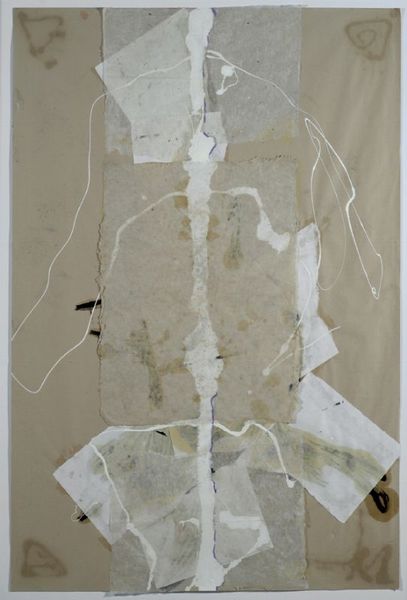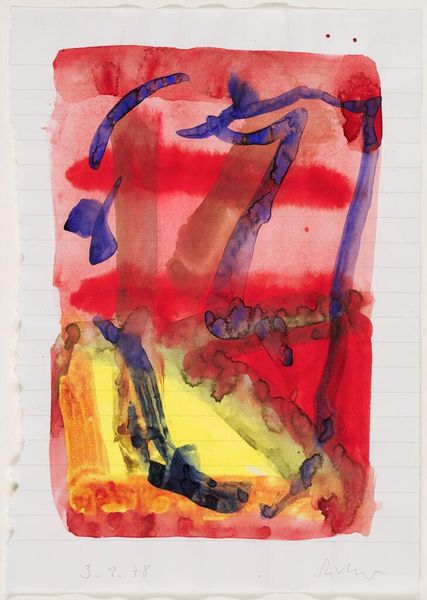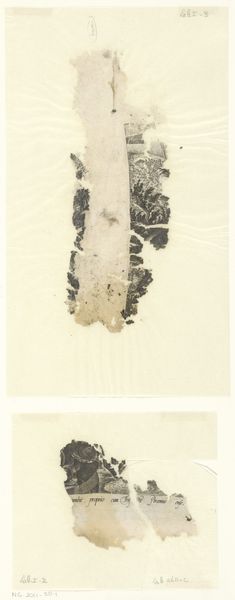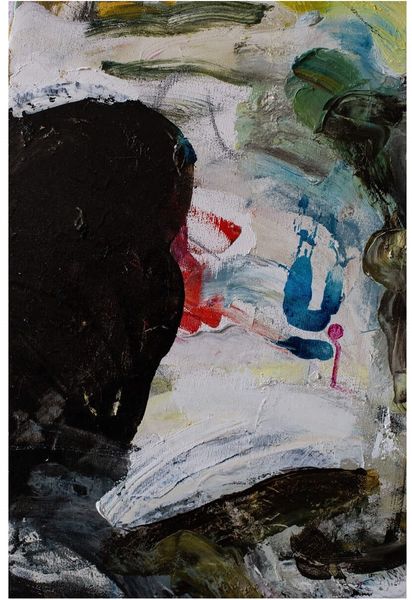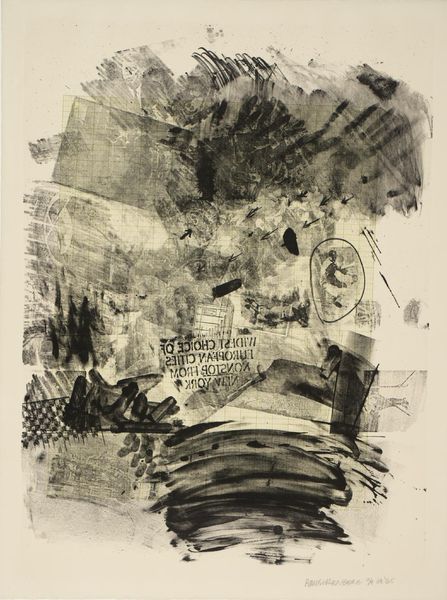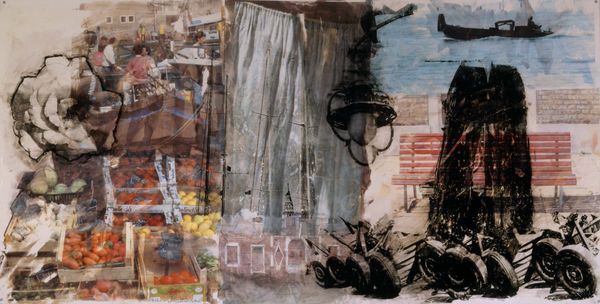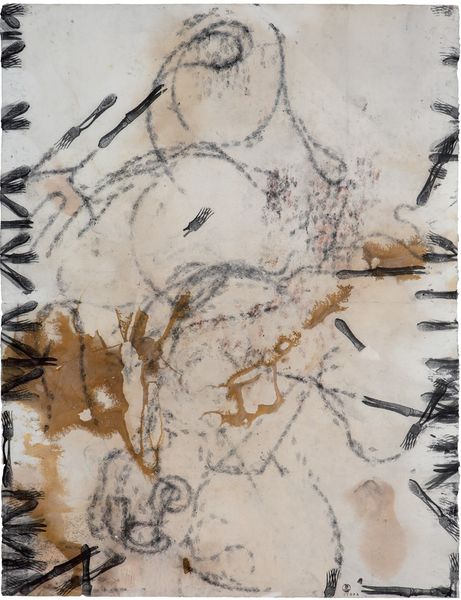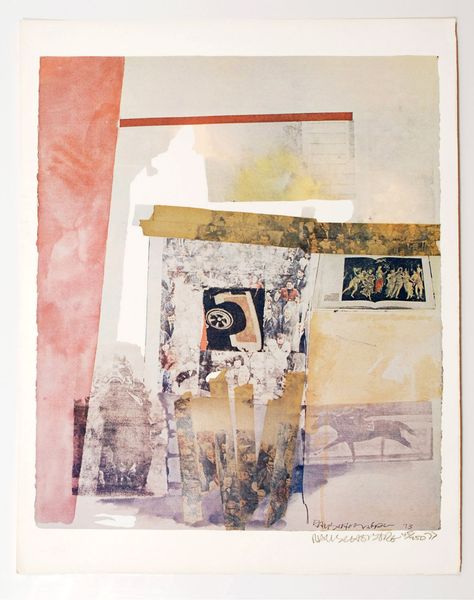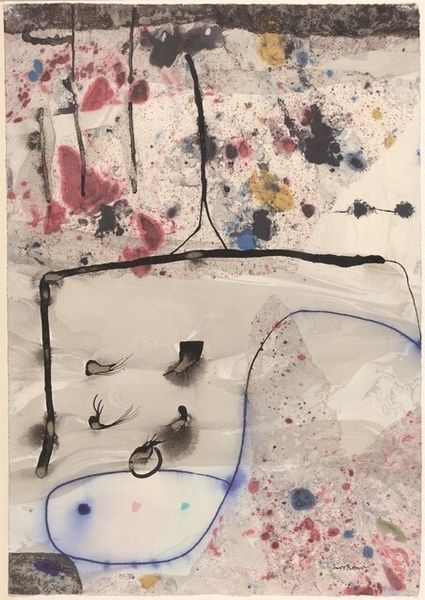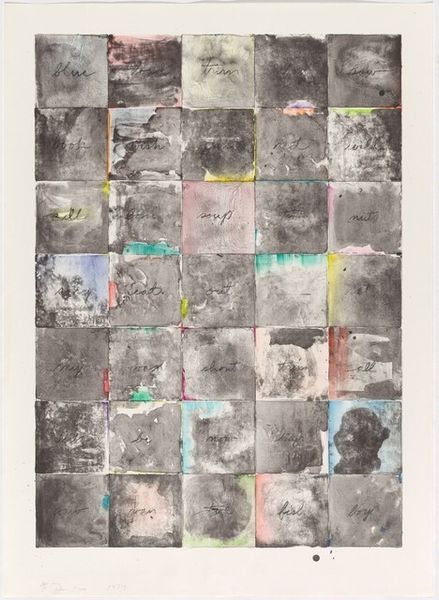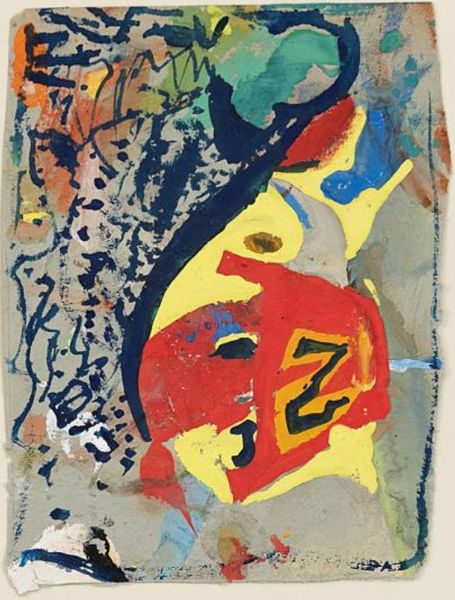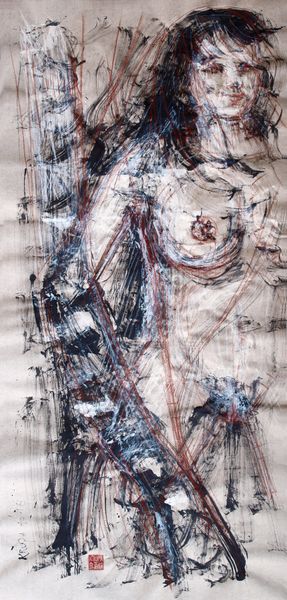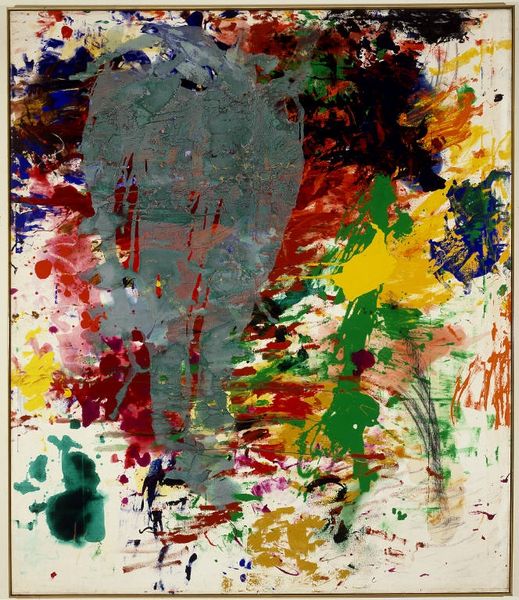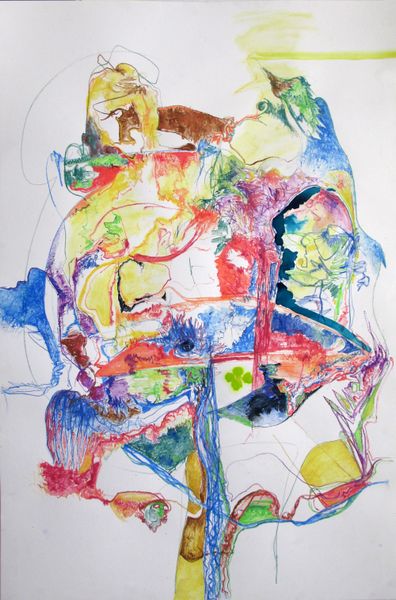
mixed-media, matter-painting, textile, acrylic-paint, impasto
#
mixed-media
#
abstract painting
#
matter-painting
#
textile
#
acrylic-paint
#
impasto
#
art-informel
#
abstraction
#
mixed media
Copyright: Giuseppe Pinot-Gallizio,Fair Use
Curator: Standing before us is "Industrial Painting" by Giuseppe Pinot-Gallizio, crafted in 1958. He worked with mixed-media—acrylic paint and textile form the basis of the impasto technique used. Editor: My first thought? It’s like looking at a storm inside a dream. Muted colors, swirling shapes, an echo of industry rather than a clear depiction. Curator: Gallizio was deeply embedded in the Art Informel movement, a European avant-garde current which eschewed geometric abstraction for more intuitive forms. The socio-political undercurrent of the late 1950s was rife with anxieties regarding industrial advancement. This piece feels like a direct expression of that unease, wouldn't you agree? Editor: Absolutely, and it's a very visceral response. The painting breathes, moves. You feel almost consumed by it. There's an element of chance, the chaotic, perhaps uncontrolled outpouring of color. Do you think it makes sense to frame the mixed media here? Curator: I'd posit that his choice to combine textile with acrylic adds another layer of complexity. Remember, textiles often bear the marks of everyday life—labor, production, consumerism. They hint at the hidden mechanisms and processes underpinning that sense of uneasy progress. Editor: So it’s like he's taking the industrial fabric itself and using it to depict its own messy, human impact. There is an ephemeral, almost dreamlike, quality that captures the atmosphere of that time. It makes me question what "progress" truly means. Curator: It becomes less about the what, and more about how it makes us feel. Its refusal to resolve into a recognizable form invites us to bring our own interpretations and experiences into play. I like how such abstract forms make me see forms that could only live in our shared unconscious. Editor: Precisely! The work transcends mere aesthetics to become a platform for something akin to collective introspection. Reflecting upon the shadows of progress... Very potent and of the era, but still alive today, somehow. Curator: It leaves me pondering the responsibility artists hold in visualizing societal currents and anxieties. And, the role that museums can play in creating space for this. Editor: Yes. It all leaves you with a rather wonderful aftertaste.
Comments
No comments
Be the first to comment and join the conversation on the ultimate creative platform.
